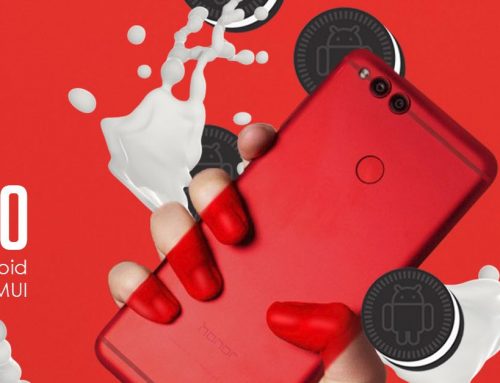Finally the Samsung Galaxy S7 and S7 Edge are official and we can stop reading about the leaks from the S.S. Samsung. The anticipation leading up to these two devices has been high, and the leaks have been plentiful. Pretty much everything you’ve read is true, and there won’t be much new information here.
First off yes the microSD card and waterproofing have made a triumphant return. This time though it is IP68 rated instead of IP67 offering better protection. The microSD card shares the SIM tray, and the phone is sealed internally to keep out water and dust.
The designs haven’t changed much except for a little more rounded back on both. Which should make them even more comfortable to hold. Plus the S7 lost a little of it’s size going from 5.2 inches to 5.1. While the S7 Edge actually grew from 5.2 inches to 5.5 inches. This is more of a refinement on an already welcome design change we had with the S6 and S6 Edge.
Samsung didn’t mention during their presentation any of the specs. They did talk about the vapor tube inside of the phone which will help keep the SoC cool. The tube is filled with liquid which will vaporize when it’s hot and condense when it’s cool. They compare it to air conditioning for your phone. CPU performance is said to be 30% better than last year’s models. While the GPU is about 60% faster than what was in the S6. Gaming performance is also supposed to be boosted by project Vulkan. Which promises PC gaming quality on a device which fits in your hand.
It wasn’t mentioned in the presentation but, we assume Samsung will use two different CPUs depending on region. One being their in house Exynos while the other being the Snapdragon 820. Expect to see the Snapdragon 820 in the US models. Below is a full list of specs you can expect for each phone.

Galaxy S7
- Display: 5.1 inch QHD 2560×1440 AMOLED 577PPI
- CPU: Quad-core 2.15GHz + 1.6GHz processor
- RAM: 4GB (LPDDR4)
- Storage: 32GB; microSD up to 200GB
- Camera: Rear: Dual Pixel 12MP with OIS (F1.7); Front: 5MP (F1.7)
- Battery: 3000mAh
- OS: Android 6 Marshmallow
- Dimensions: 142.4 x 69.6 x 7.9mm, 152g
- Connectivity: WiFi 802.11 a/b/g/n/ac (2.4/5GHz), MU-MIMO, Bluetooth® v4.2 LE, ANT+, USB 2.0, NFC, Location
- Sensors: Accelerometer, Proximity, RGB Light, Geo-magnetic, Gyro, Fingerprint, Barometer, Hall, HRM
- Colors: Black Onyx, Gold Platinum

Galaxy S7 Edge
- Display: 5.5 inch QHD 2560×1440 AMOLED 534PPI
- CPU: Quad-core 2.15GHz + 1.6GHz processor
- RAM: 4GB (LPDDR4)
- Storage: 32GB; microSD up to 200GB
- Camera: Rear: Dual Pixel 12MP with OIS (F1.7); Front: 5MP (F1.7)
- Battery: 3600mAh
- OS: Android 6 Marshmallow
- Dimensions: 150.9 x 72.6 x 7.7mm, 157g
- Connectivity: WiFi 802.11 a/b/g/n/ac (2.4/5GHz), MU-MIMO, Bluetooth® v4.2 LE, ANT+, USB 2.0, NFC, Location
- Sensors: Accelerometer, Proximity, RGB Light, Geo-magnetic, Gyro, Fingerprint, Barometer, Hall, HRM
- Colors: Black Onyx, Gold Platinum, Silver Platinum
While they are both using a Quad HD AMOLED panel. The big change this year is these are always on displays. They will show you a clock and notifications without ever having to wake up the phone. The screen is also supposed to detect when it’s in your pocket or upside down and turn itself off to save battery.
Some big changes came with the camera this year. With it dropping from 16MP to 12MP, and the aperture going from f/1.9 to f/1.7. The pixels on the sensor are now 30% larger than the ones used in the iPhone, and they are using dual pixel technology. All of this combines to give you much better photos in lower light. Samsung wanted to make a camera which was unphased during the day and also provided great images in lower light. The focusing also uses 100% of those dual pixels leading to faster focusing times. For a comparison the iPhone only uses 5% of it’s pixels to focus. The rear camera has kept optical image stabilization. Also to take your photos to the next level Samsung is also going to offer separate lenses which can be added. To add to that they also now offer a twist on live photos. They call it Motion Panorama, it’s basically a panorama but includes motion.

Another welcomed change this year is an increase in battery size. The Galaxy S7 has taken a jump to 3000mAh battery, and the Galaxy S7 Edge has a 3600mAh battery. Both of these should help a lot with getting you through the day, as well as be useful for those always on displays. They both still support fast charging and wireless fast charging. Sadly Samsung stuck with a micro USB port though instead of adopting the USB-C port. Perhaps they were too far into development to make the switch, or just wanted to stay compatible with older accessories. Such as their fast chargers that previous customers already have.
Both models come with Android 6 Marshmallow with TouchWiz running on top. It essentially looks the same but toned down a bit more, and at first glance appears to be an improvement. There is a section in the menu called Galaxy Labs which allows you to try out new features not yet final in the software. One such feature is to put all apps on the home screen. This basically matches LG’s G5 removal of the app drawer. Something I’m not a fan of.
Pre-orders will start February 23rd, and they will be in stores beginning March 11th. No word on pricing yet, but expect them to be between $600-800 dollars though. You can also get an early look at them starting February 24th at participating Best Buy stores. As well as AT&T, Sprint, T-Mobile, Verizon Wireless and U.S. Cellular stores across the U.S. starting February 26th. The full list of participating locations is available at http://www.samsung.com/us/gs7. All pre-orders will also come with a Gear VR headset a $99 value.
Source: Android Police & Samsung Unpacked Event










